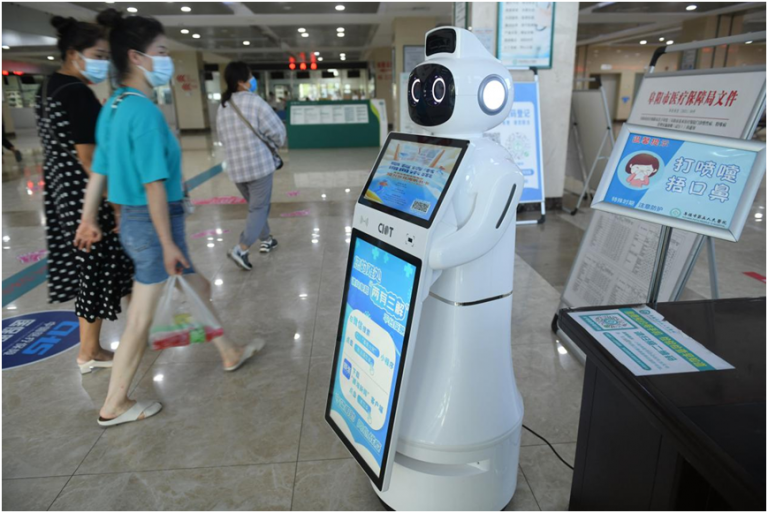
By Peng Xunwen
The integration of informatization and industrialization is driving the prosperous development of intelligent technologies and, in particular, the robotics industry. Nowadays, more and more service robots have become a part of people’s daily lives.
According to a recent report released by the Chinese Institute of Electronics, the average annual growth of the Chinese robotics industry over the past five years reached 22 percent.
Robots are employed in a number of scenarios, such as education, medical care and emergency rescue, with new business models constantly emerging, heralding a new intelligent era featuring human-robot collaboration.
Recently, there was a trendy hashtag on Chinese social media about the first batch of people who walked robotic dogs. Videos have been posted online showing robotic dogs walking on streets. They have similar-sized limbs to real pet dogs and can roll and stand on their hind limbs.

Many Chinese companies have launched robotic dogs. For instance, one developed by a tech firm based in Hangzhou, east China’s Zhejiang province, is able to carry a load of 3 kilograms and serve as a running companion for its owner. Last year, electronics manufacturer Xiaomi also unveiled a bipedal humanoid robot that is able to “see” and “sense” its surroundings with face and body recognition technologies. The robot can follow its owner and avoid obstacles automatically.
Thanks to the rising manufacturing capability, robots are no longer exclusive to industrial production. They are now helping people in many aspects.
They are widely employed in domestic service, acting as people’s personal assistants, such as robot vacuum and mop, and cooking robot. In June this year, Chinese electrical appliance manufacturer Midea Group launched a robot that can act as an AI butler, family assistant, safety guard and tech playmate.
In the sphere of education, robots are great teachers and coaches. This June, a board game robot was introduced to a school in Guangzhou, south China’s Guangdong province. Apart from teaching students to play various board games, it can also introduce the culture and rules of the games.
As China sees an accelerating aging process, robots are also used in elderly care. Some products that aim to improve senior people’s self-care and risk-prevention abilities are already available on the market. For example, wearable exoskeletons are designed to assist seniors with mobility difficulty.

The Ministry of Industry and Information Technology, the National Development and Reform Commission and the Ministry of Science and Technology jointly issued a guideline for the robotics industry for the 14th Five-Year Plan period (2021-2025) at the end of 2021.
The plan said that China will strive to become a global hub for robotics innovation, high-end manufacturing, and application by 2025, and the country will boast world-leading competitiveness in the robotics industry by 2035.
The guideline indicated that the Chinese robotics industry has embraced a strategic opportunity to achieve independent and leapfrog development.
At present, service robots are manufactured to offer more convenient and intelligent services, as well as complicated functions. They are empowered by a number of new technologies such as AI, virtual reality, and 5G, which creates more possibilities for the application of robots.










